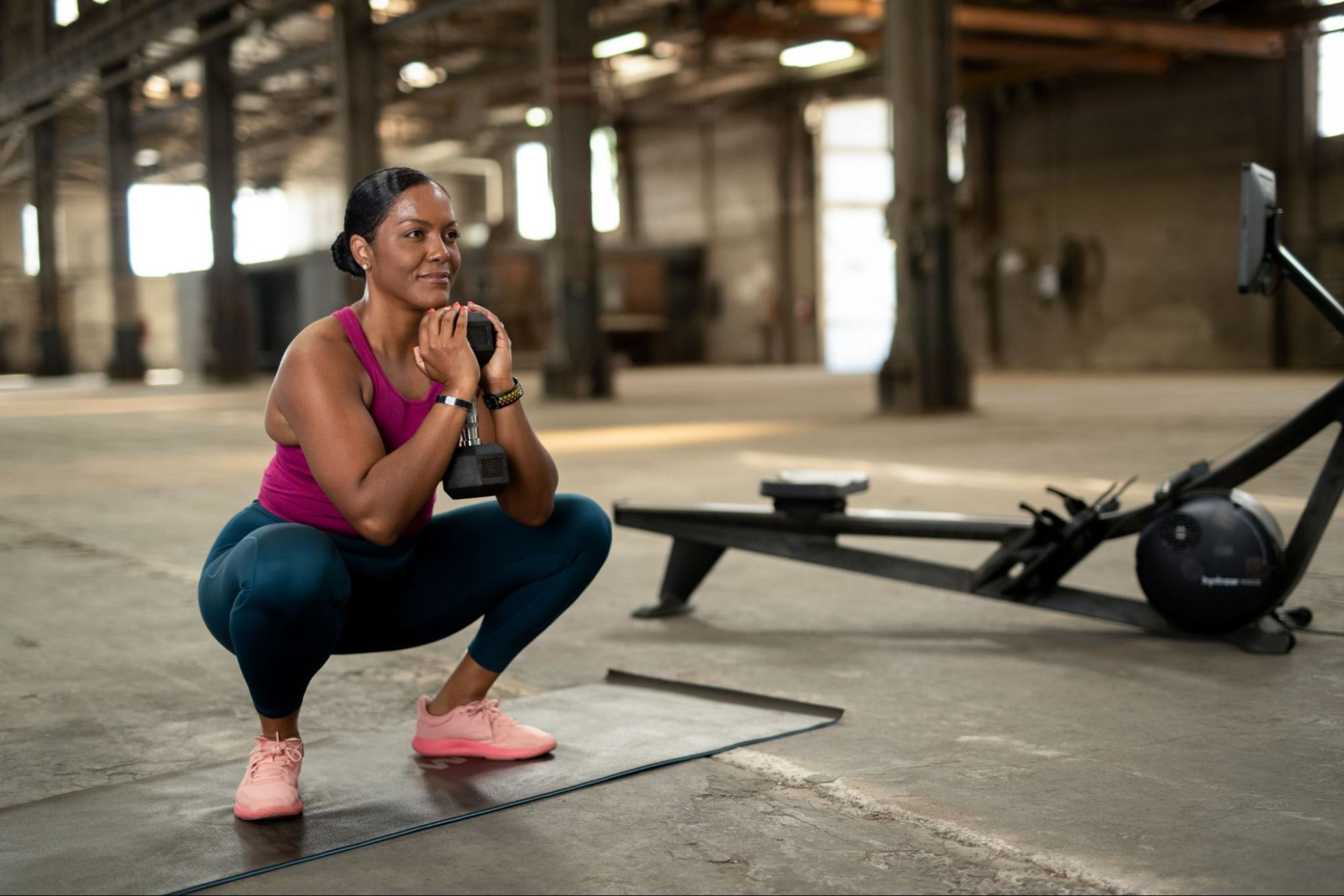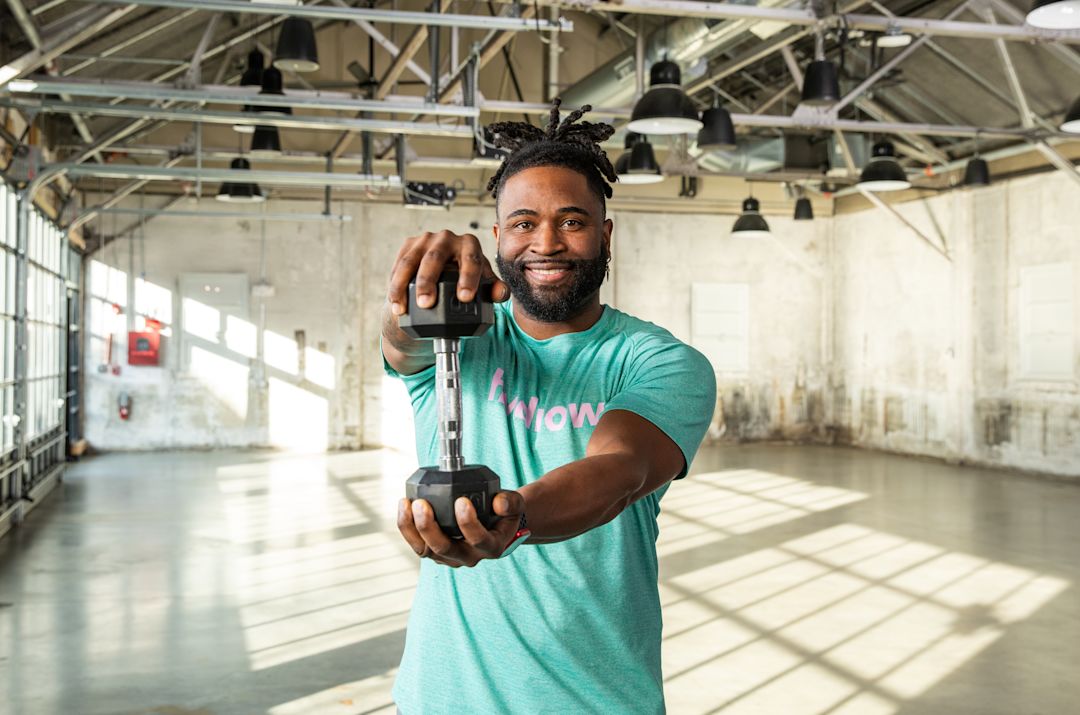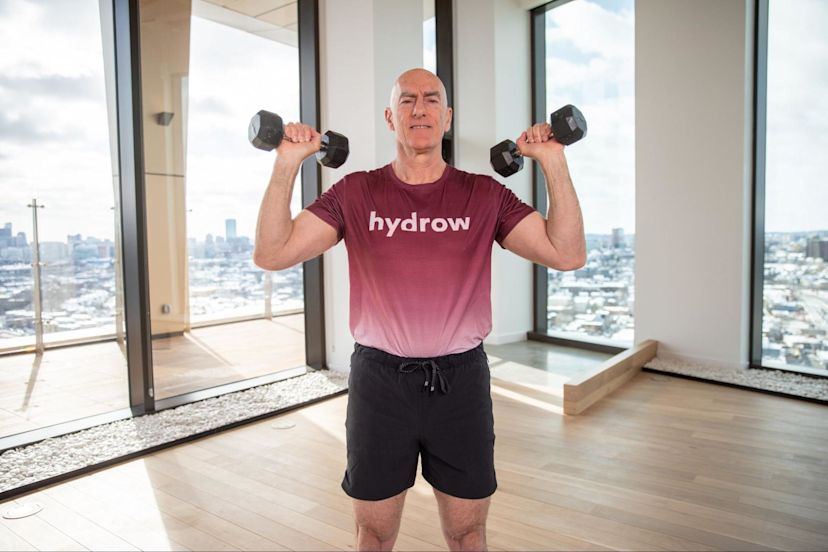The Benefits of Strength Training During Menopause: Why It’s Never Too Late to Start Lifting

The benefits of exercise extend to every stage of life. Exercise boosts your mood, improves cardiovascular health, increases bone density, and generally keeps you healthier. But as we age, our body’s needs change, and some forms of exercise can benefit you more than others.
This is especially true for those going through menopause. Menopause causes changes in everything from body composition to bone density to temperature regulation. Among the ways to mitigate the symptoms of menopause, exercise is excellent.
But just not any exercise — of all the ways to keep moving through The Change, strength training is one of the best. Read on to learn about
The benefits of strength training for menopause
Over the past few years, more and more studies have begun to show an array of benefits of strength training for women (especially in menopause), including:
Increased production of muscle-building stem cells
Increased metabolism
Increased bone density
Improved cardiovascular (and overall) health
Decreased joint pain
Improved mood
Decreased hot flashes
Let’s dig in more about strength training’s effects below:
1. Increased production of muscle-building stem cells
Muscle fiber size decreases over time for both males and females, but menopause causes a sharp drop in both the size of your muscle fibers and the body’s ability to produce them. That’s because the body stops producing as much estrogen, which is linked to the amount of muscle-making cells (called satellite cells) that your body has.
Strength training increases the number of satellite cells your body produces and the size of your muscle fibers, so it is the best way to counteract that lack of estrogen.
2. Increased metabolism
Individuals with a higher percent of lean body mass have higher resting metabolic rates, and therefore burn relatively more calories throughout the day. Since weight training builds up your muscle fibers and your ability to create muscle fibers, it also increases your metabolism and helps stave off the postmenopausal weight gain that many females experience.

Explore Hydrow's library of strength training workouts.
3. Increased bone density
Changing hormone levels during menopause also leads to decreases in bone density. In fact, women can lose up to 10% of their bone mass in the five years following menopause. However, a study that looked at the effect of weight training on bone density in 40- to 50-year-old women found that even six months of weight training significantly increased females’ bone density.
4. Improved cardiovascular (and overall) health
There are risks associated with the physical changes that happen in the wake of menopause. A slower metabolism and increasing body mass index (BMI) increases your risk for complications like high blood pressure and Type 2 diabetes.
Because strength training increases your metabolism and muscle mass, it also decreases your risk factors for these health problems.

Explore Hydrow's library of 5,000+ rowing, circuit training, yoga, Pilates, and mobility workouts.
5. Decreased joint pain
Strength training gets your blood pumping! Increased circulation to your muscles and surrounding joints can help fight inflammation associated with changing hormone levels. Not to mention, building up muscles around your joints will improve their stability, further decreasing pain and risk of injury.
6. Improved mood
You’ve heard it before — exercise makes you happier. And it’s true! But strength training adds another layer to that. When you feel strong, you feel powerful. Especially at a time when your body is experiencing a change that you can’t control, building up your physical strength could give you some appreciated agency during this time in your life.
7. Decreased hot flashes
There are some promising studies that show resistance training may also decrease the occurrence of hot flashes and night sweats during menopause. The endorphins released during resistance work are thought to help the body with its thermoregulation, which is often on the fritz around this point in life.
The best strength training exercises for menopause
Thinking about incorporating some strength training into your exercise routine, but not sure where to start? Here are some of the best strength training exercises to help you get started on your strength training journey during menopause:
Core
Planks: Planks are a great isometric exercise that work your core and help build shoulder stabilization. They are a versatile bodyweight exercise that you can do anywhere!
Glute bridges: Glute bridges work your glutes and core. They are great for strengthening your posterior chain (hamstrings, glutes, and lower back), and can help relieve back pain.
Legs
Squats: Squats will help strengthen everything from your legs, hips, glutes, core, and back. Especially when you’re starting out, you can easily do them as a bodyweight exercise, but adding weight to your squats over time is one of the best ways to build overall strength and increase your flexibility.
Lunges: Lunges also target pretty much every muscle group in your lower body, but they have the added benefit of being a unilateral (one-sided) exercise. That means they also help you build balance and identify any strength imbalances between your left and right sides. Start out with bodyweight and add a kettlebell or dumbbell over time.
Arms
Dumbbell rows: Rows are easy to do and build bicep, chest, and back muscles. Doing rows will almost immediately make you feel stronger, but also are great at building the assistance muscles you need to do well with lower-body strength work. It’s the perfect exercise to pair with squats.
Tricep extensions: Tricep extensions will hit an area that can be easily forgotten about: your triceps! Isolating and strengthening your triceps is great when paired with rows, and also improves the flexibility of your arms and the stability of your shoulder joint.
Related blog: Your Guide to 12 Powerful Arm Workouts for Women
Tips for getting started with strength training during menopause
Now that you’re looking to add strength training into your fitness routine, here are a few tips to help you get started:
1. Start light, build consistently.
Aim to complete three to five sets of 10 to 12 repetitions. Sticking to this breakdown of work will allow your body to build both strength and power without getting too fatigued. As you find the reps getting easier, slowly increase the weight (about 10% every week). This will allow your body to adapt and benefit from the change while minimizing risk of injury.
2. Don’t forget to warm up!
Proper preparation is key to minimizing injury and getting the most out of your workouts. If you’re looking for inspiration, check out the mobility workouts on the Hydrow app.
Related blog: How to Build Muscle After 50—And Why It’s Important
3. No gym, no problem
If hitting the weight room feels a bit too intimidating to start, or you don’t have access to a gym, no problem! Strength training can be done with resistance bands, small dumbbells, and (my favorite!), your own bodyweight.
If you’re looking for some at-home strength workouts to get started, check out the Strength Training workouts on your Hydrow app.
Strength training during menopause: Final thoughts
While menopause is inevitable, it does not have to mean that our health or lifestyle will suffer. Strength training can counteract many of the hormonal changes we endure, but that’s not the only reason to do it.
Get strong because there is power in trying something new, power in taking control of your health, and power in knowing that you are a strong woman. If you want to get started, check out the Strength Training workouts in the Hydrow app!




